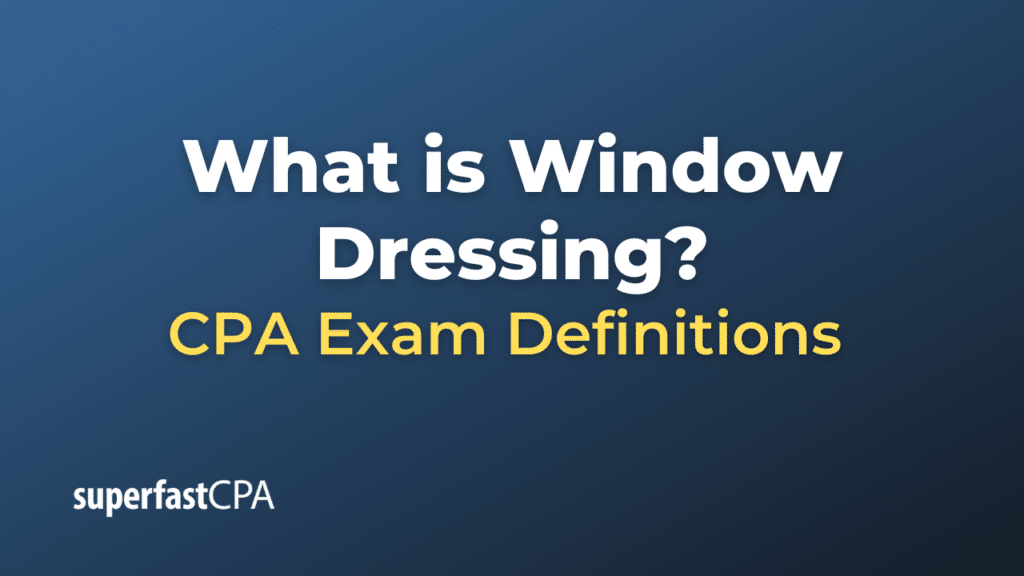Window Dressing
“Window dressing” is a term often used in the context of finance and accounting to describe the act of altering financial statements or investment portfolios in a way that makes them appear more attractive than they actually are. This manipulation is generally done shortly before the financial statements are due to be presented to shareholders, or at the end of a reporting period for investment portfolios.
Window dressing can involve various activities, such as:
- Short-Term Debt Repayment: Temporarily paying off short-term debt to reduce the liabilities on the balance sheet.
- Asset Shuffling: Moving assets and liabilities around to make the balance sheet look stronger. For example, selling poorly performing assets and purchasing high-performing ones just before the end of the reporting period.
- Revenue Acceleration: Recognizing revenue earlier than it should be to inflate the income for the period.
- Expense Delay: Delaying the recording of expenses to increase the current period’s income.
- Investment Portfolio: For investment managers, it may involve selling off poorly performing stocks and buying high-performing stocks at the end of the quarter to make the portfolio look more profitable to investors.
It’s important to note that while some forms of window dressing may be within the letter of the law or accounting rules, they can still be misleading to investors and stakeholders. In some cases, window dressing can cross the line into fraudulent activity, especially if it’s intended to deceive shareholders or regulators.
Example of Window Dressing
Let’s consider a hypothetical example to illustrate the concept of window dressing in accounting and finance.
CleanTech Corp, a manufacturer of green technologies, has had a challenging fiscal year. As the end of the year approaches, the company wants to make its financial situation look healthier than it actually is to attract new investors and keep current ones happy.
Actions for Window Dressing:
- Short-Term Debt Repayment: CleanTech has $500,000 in short-term debt that will make its balance sheet look heavily leveraged. The company uses its available cash reserves to pay off this debt just days before the year ends.
- Asset Sales: The company sells some of its underperforming assets for $200,000 and buys shares in a popular tech company that has been performing well.
- Revenue Acceleration: CleanTech also convinces a customer to place a large order before the year-end, even offering a discount to speed up the deal. It recognizes this revenue, adding $300,000 to its year-end income, although the goods will only be shipped in the next fiscal year.
Year-End Financial Statements:
As a result, the year-end financials look quite strong:
- Liabilities: Reduced by $500,000 (short-term debt repayment)
- Assets: Increased by $200,000 (new share purchases)
- Revenue: Increased by $300,000 (early order recognition)
Post Year-End Activities:
- Shortly after the new year starts, CleanTech takes out another short-term loan of $500,000.
- The shares it bought for $200,000 in the popular tech company fall in value.
- The customer who placed the large order returns half of it due to some defects, resulting in revenue adjustments and returns.
Implications:
Shareholders looking at the year-end financials would see a seemingly healthy company with reduced debt, increased assets, and rising revenues. However, these actions represent window dressing and are not indicative of the company’s actual ongoing financial condition.
Such tactics, while they may not necessarily be illegal, are misleading and could erode stakeholder trust when eventually uncovered. Therefore, they are generally considered unethical and are frowned upon in the business community.
This example illustrates how window dressing can artificially inflate or improve the appearance of a company’s financials temporarily, potentially misleading investors and other stakeholders.












